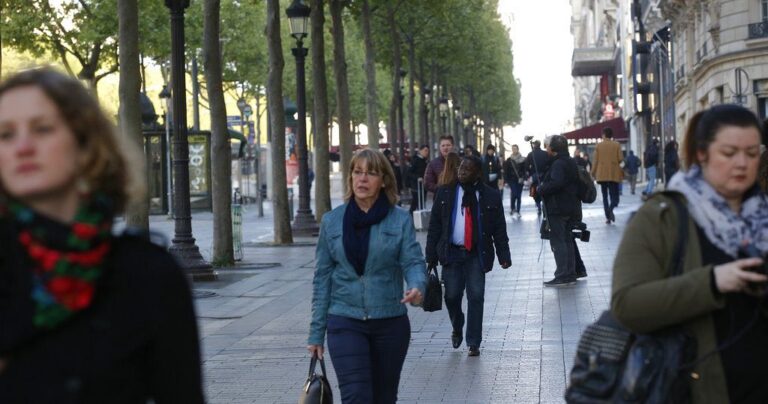More than 700 million travelers from around the world are expected to visit Europe in 2023, a post-pandemic record, but tourism trends in these popular countries could soon be undergoing a major change.
The European Union will introduce a new European Travel Information and Authorization System (ETIAS) in 2025, which will require travelers from the US and 60 other countries to get authorization before entering the “Schengen Area,” limiting travel, even for transit purposes, to 23 EU countries, four non-EU countries, and three minor countries.
ETIAS was originally scheduled to be introduced this year, and is intended to enhance border security and public health through pre-screening, marking a crucial development for visa-free visitors to the Schengen Area.
The ETIAS is not a visa, but requires an online application, offers fast processing times of anywhere from a few minutes to a maximum of 30 days, a fee of €7, and is exempt for people under 18 or over 70.
The initiative is expected to have a significant impact on travel patterns and the economy, prompting the travel industry, including airlines and major hubs such as Heathrow Airport, to adapt to the potential changes. By improving border security and efficiency, ETIAS has the potential to provide a safer and more streamlined travel experience, enhancing Europe’s attractiveness as a top travel destination.
Striking a balance between enhanced security and tourism attractiveness marks a critical juncture in the evolution of tourism in Europe.
Government officials hope that ETIAS will not only improve security but also proactively address the challenge of overtourism, with local governments across the continent already introducing their own measures, such as fines for beach towels and restrictions on public movement.
This is a strategic approach to sustain tourism without compromising the quality of the destination.
Sardinia towel ban and sand theft fines
The Italian island of Sardinia has made sustainability a priority by imposing visitor caps on its most famous beaches. Additionally, the region has imposed nearly $4,000 in fines for sand theft, particularly at the salmon-colored beach of Spiaggia Rosa. The famous beach and its pink sand have been closed to visitors since the mid-1990s to prevent further runoff, a decades-old measure that cements the island’s environmental priority.
Additionally, visitor access to other popular beaches such as La Maddalena, Cala Coticcio and Cala Brigantine now requires advance online booking and a small entrance fee to ensure sustainable tourism practices.
Portugal cracks down on beach noise
Portugal wants to promote calm on its coasts by imposing heavy fines on loud music.
The National Maritime Administration (AMN) has banned the use of portable speakers that disrupt crowds and has imposed fines of approximately $200 to $39,000 on individuals and groups. These rules are intended to provide a peaceful beach experience for everyone and emphasize the importance of respecting shared spaces.
Seville bans public display of underwear
The city of Seville is trying to maintain public decency by regulating rowdy behavior at bachelor and single women parties. The new measures aim to stamp out “indecent behavior” such as revealing clothing or clothing carrying sexist messages in public places.
“The initiative is part of a broader effort of similar measures to ensure Seville’s streets remain respectful and welcoming places for all. These strategies reflect the city’s efforts to balance a modern, vibrant nightlife with its traditional cultural heritage that attracts tourists from all over the world.
Portofino cracks down on selfie-seekers with fines
The city of Portofino has introduced fines to manage tourist crowds. Mayor Matteo Viavaca announced that people loitering in popular photo spots will be fined around $300 to ease “disorderly chaos” on the streets. The rules target two “red zones” notorious for blocking pedestrian traffic.
The initiative, which has been in place since Easter weekend, aims to improve the visitor experience while preventing crowding, and Portofino joins a global trend of tourist destinations introducing tourist caps and taxes to balance tourism with the quality of local life.
Austrian village implements unique strategy to prevent tourist chaos
A temporary wooden fence has been erected in a charming Austrian village in an attempt to curb excessive and aggressive behaviour, particularly from selfie-obsessed tourists. Hallstatt, known for its picturesque landscapes and with a population of less than 800, attracts up to 10,000 visitors every day.
The move is part of Hallstatt’s broader effort to prioritize quality tourism – another element of what is now a global trend in destinations to cushion the blow of soaring tourist numbers – and aims to maintain the quality of life and preservation of culture for local residents.
Spanish organizations take creative stance against overtourism
Signs strategically placed by anti-capitalist groups on Mallorca’s beaches continue to block tourists, highlighting locals’ collective resistance to overtourism. The initiative by Manacor Caterba aims to protect the island’s natural beauty and mitigate the impact of millions of visitors per year. The signs warn of non-existent dangers and send a message to bystanders about the impact tourism has on the environment and the well-being of local communities.
Venice transport and entrance fees coordination
Venice has implemented a $5 admission fee for day-trippers that varies depending on the season and visitor numbers and can rise to as much as $10 at peak times. The fee is intended to regulate visitor numbers and encourage longer stays. Prices for public transportation passes and municipal parking have also increased, although discounts are available for those who book in advance.
The innovative approach Europe took last year to manage overtourism could motivate other destinations to combat similar challenges.

